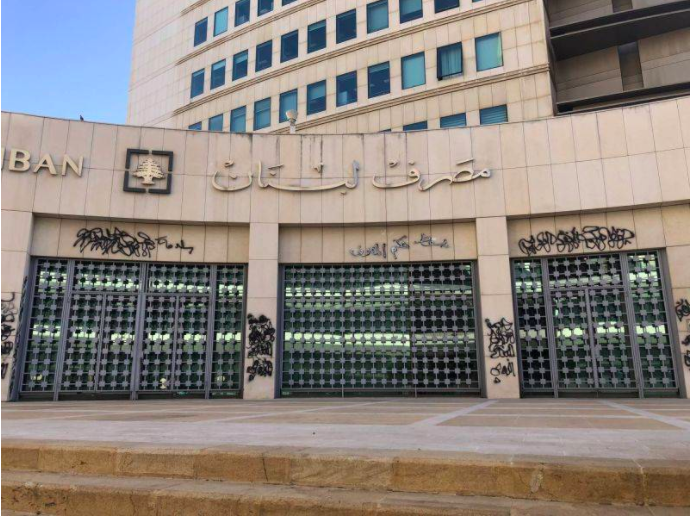
Market analysts see recent measures implemented by BDL as a temporary fix, addressing a problem it itself created by doubling the 'lollar' withdraw rate. (Credit: Philippe Hage Boutros/OLJ)
BEIRUT — Following yesterday’s meeting between Prime Minister Najib Mikati, Finance Minister Youssef Khalil and Banque du Liban Gov. Riad Salameh, held at the request of Mikati, to find solutions to deal with the national currency’s rapid depreciation on the parallel market, the central bank announced two measures to curb the sell-off.
BDL will provide banks with cash US dollars instead of Lebanese lira at the Sayrafa rate for their remaining quota of this month’s liquidity. In turn, banks will sell these dollars to their clients at the Sayrafa rate.
BDL will approve the repayment of commercial foreign currency loans in cash lira at the rate of LL8,000 to the 'lollar', or “Lebanese dollar,” this is the same rate that was set for ‘lollar’ withdrawals last Thursday.
Here’s what we know:
• Last Thursday, the lira was trading between LL24,000 and LL24,500 before the central bank surprised the market and announced the doubling of the ‘lollar’ withdrawal rate from LL3,900 to LL8,000. On the back of this decision, the lira plunged more than 15% to LL29,000 in the span of four days.
• Analysts blamed the central bank’s unilateral decision for the rapid decline in the value of the lira, forecasting further increases in the money supply and predicting a vicious cycle where an increase in the ‘lollar’ withdrawal rate will lead to further depreciation of the lira on the parallel market. They stressed that without a comprehensive economic reform plan, decisions taken on a unilateral and stand-alone basis will fail to restore market confidence and can backfire, causing further decline in the lira’s value, as recent events have shown.
• Market commentators’ feedback on yesterday’s announcement dealing with the rapid decline is mostly negative. Most of them view these measures as temporary, aimed at addressing a problem the central bank created for itself (raising the ‘lollar’ withdrawal rate to LL8,000). In their view, unless negotiations with the IMF show tangible progress or the government unveils the details of a comprehensive reform plan beyond the controversial financial sector losses number, then the depreciation of the lira will continue unabated.
• Others expressed concerns about the mechanisms of the Sayrafa platform. A recent article published by L’Orient le Jour, compares Sayrafa to a black box, in that no one knows how its rates are calculated or if they are even real. Analysts argue that the central bank is wasting its foreign currency reserves by handing them out to banks once again, and with no traceability as to the identity of the final buyers, they ask who are the lucky chosen who will be buying US dollars at a 20 percent discount compared to the parallel market rate.
• Regarding the decision to allow the repayment of foreign currency loans in cash lira at the rate of LL8,000, analysts point out that this measure does not help in creating more demand for the lira. Existing schemes have already been put in place by parallel market brokers, whereby people can purchase ‘lollar’ checks at a cost of LL5,300 per ‘lollar’. It works like this: you sell your lira and buy fresh US dollars at LL26,500 (current market rate), then you exchange your fresh US dollars for a ‘lollar’ check for five times the value, meaning $1000 fresh dollars will buy a $5000 ‘lollar’ check. The result is: LL5,300 will buy you one 'lollar'. So why pay LL8,000 when you can pay LL5,300?